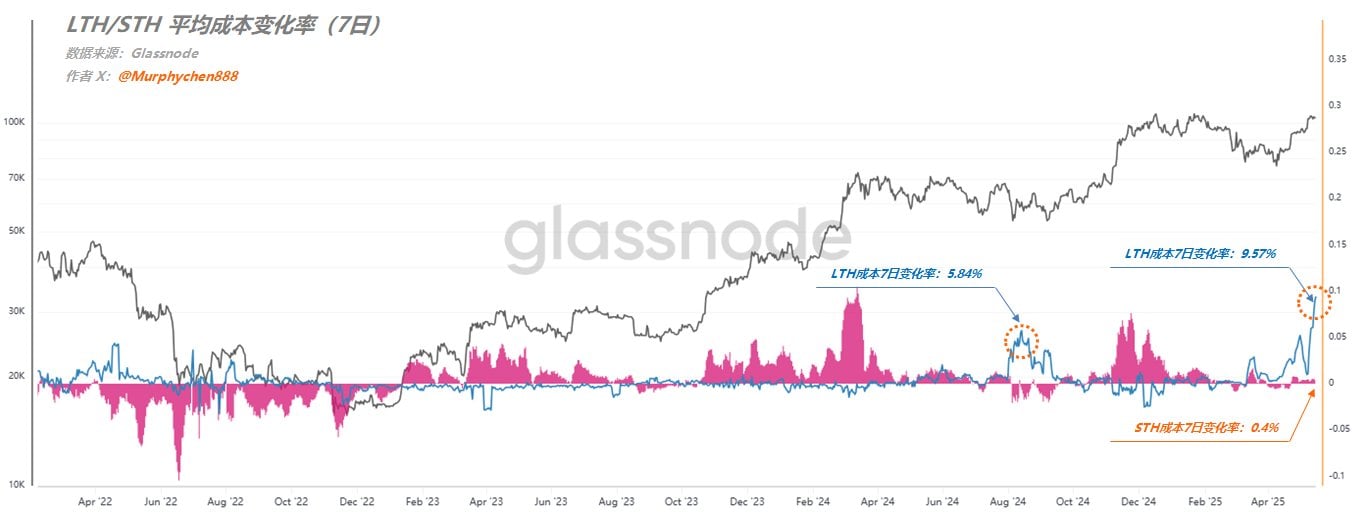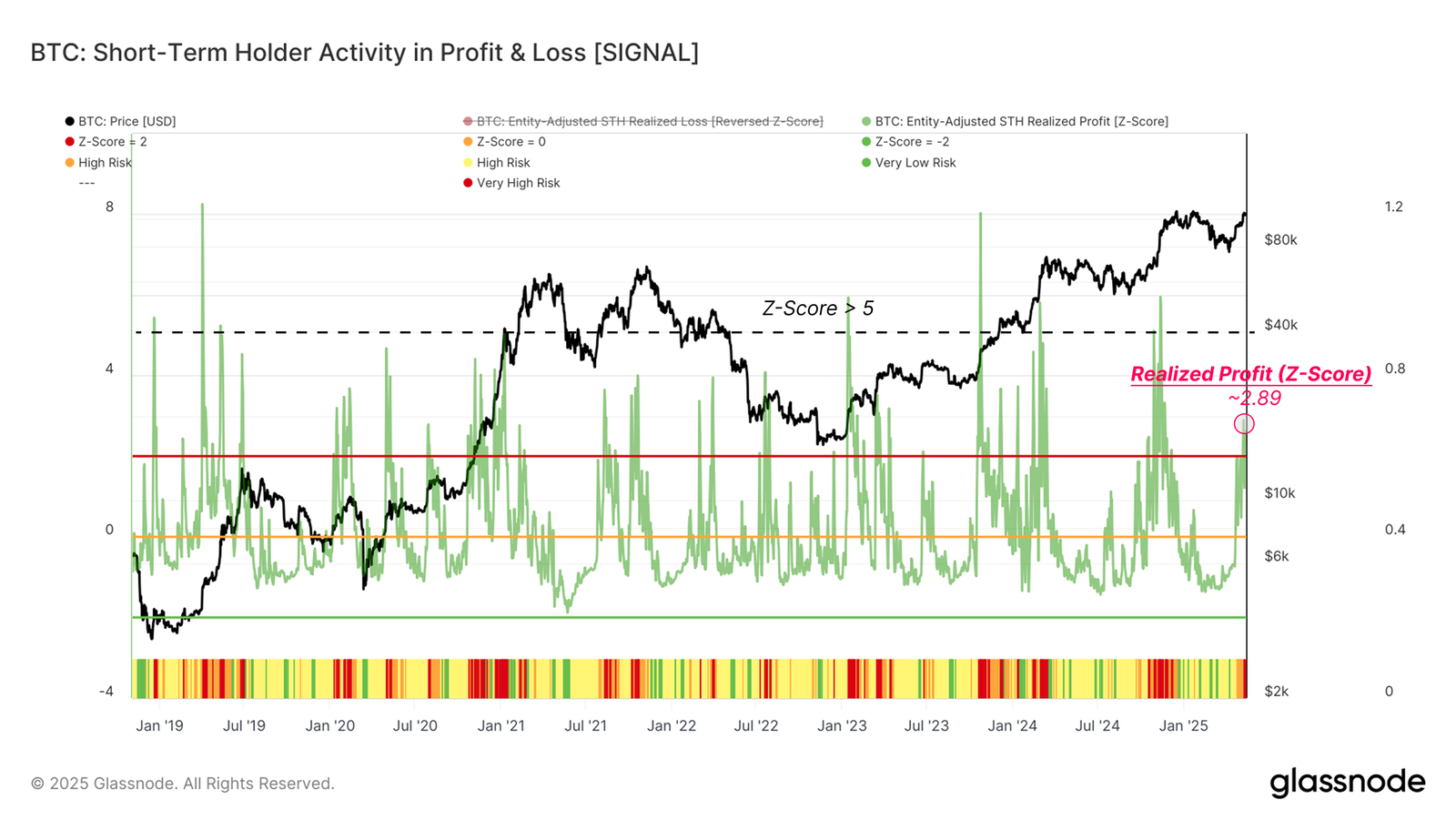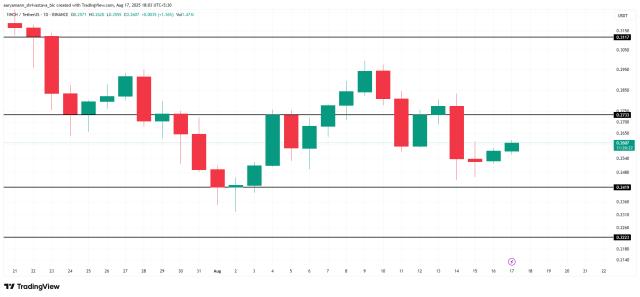As Bitcoin surges to $100,000, the behavior patterns of long-term and short-term holders are quietly changing, with some investors choosing to take profits, potentially subjecting the market to short-term pressure.
Diamond Hands Start Selling, LTH Average Cost Rises Abnormally
On-chain data analyst Murphy pointed out that the average cost of Bitcoin's long-term holders (LTH) has recently risen rapidly, currently reaching around $31,000, caused by two reasons:
- Some STH who entered at high prices are converting to LTH, pushing up the overall cost;
- Meanwhile, some long-term holdings with extremely low costs are being sold, causing the average cost to rise
This phenomenon is quite rare, as LTH are typically "diamond hands" who tend to hold long-term and not easily exit. The average cost usually remains stable. The current significant fluctuation (7-day cost change rate reaching 9.57%, far exceeding STH's 0.4%) is worth pondering.
Previous high volatility for LTH occurred in August 2024, when Japan's interest rate hike led to yen carry trade liquidation, also triggering significant LTH movement due to panic selling caused by a black swan event.
This time, Murphy believes the reason might be that some LTH consider the current price a stage high point and choose to gradually exit and take profits for hedging purposes.

STH Realized Profits Surge, Selling Pressure Intensifies
Meanwhile, glassnode's latest weekly report indicates a significant increase in realized profits for short-term holders (STH). The STH realized profit value has now reached +3 standard deviations of its 90-day average, reflecting intensified short-term profit-taking behavior.
However, glassnode added that looking back at previous moves towards ATH, STH profit realization intensity usually reaches over +5 standard deviations, and the current level has not reached an extreme, meaning the market still has room for further upward movement and has not shown a clear demand exhaustion signal.
Combining Murphy and glassnode's observations, both long-term and short-term investors show signs of increasing profit-taking, suggesting potential price correction if demand fails to keep up.






